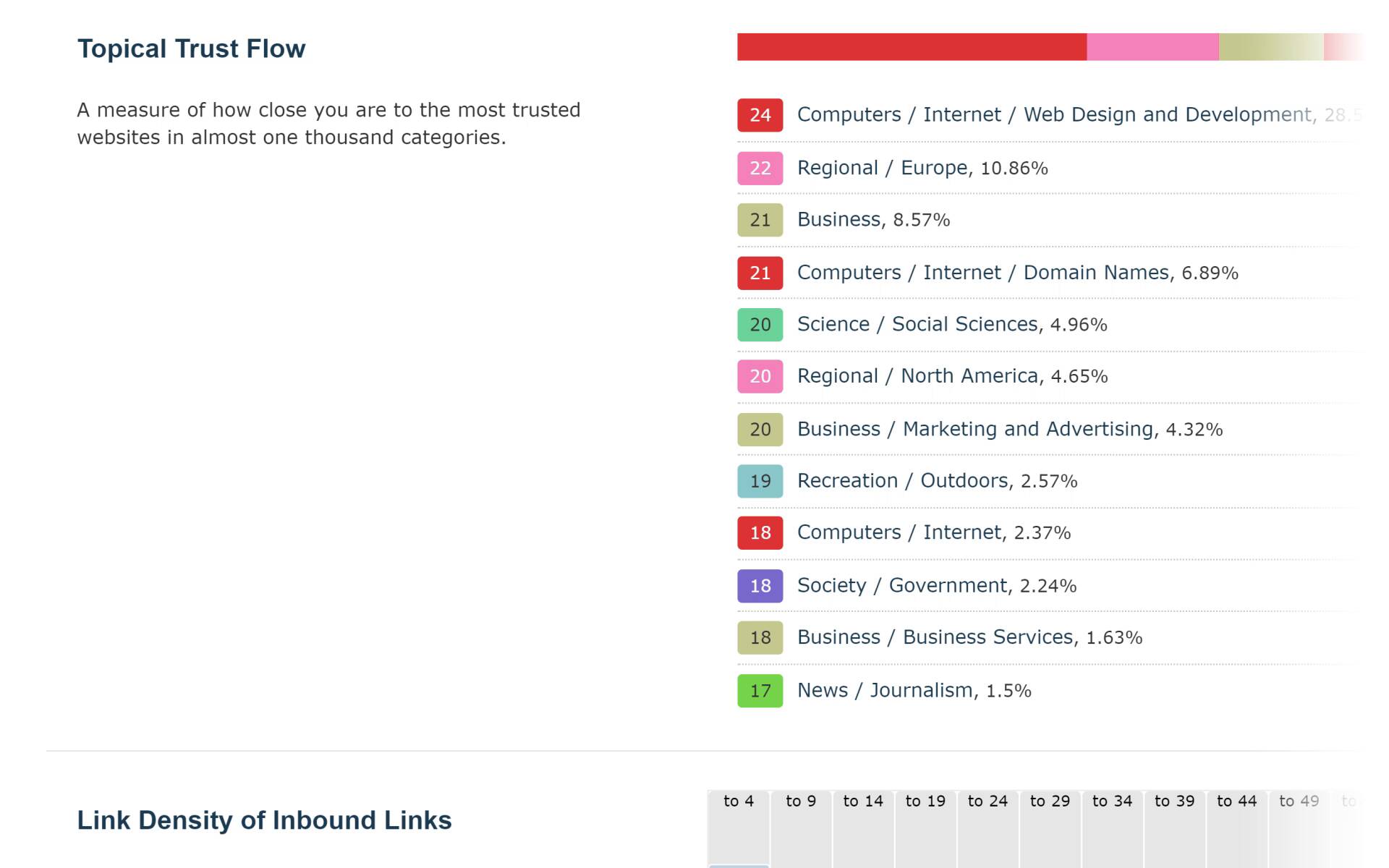Majestic SEO Review: How Does This Link Building Tool Stack Up?
Written by Brian Dean

This is a SUPER in-depth review of Majestic SEO.
In this review I’ll break down everything you need to know, including:
- Majestic SEO’s key features
- Pricing and plans
- How it compares to other link building tools
- Whether or not it’s worth the price tag
- Lots more
So without further ado, let’s dive right in.
What Is Majestic SEO?
Majestic SEO is an SEO software tool that specializes in link analysis.

So unlike Ahrefs, SEMrush or Moz Pro, Majestic is all about backlinks.
In other words: Majestic isn’t an all-in-one tool that does keyword research, SEO site audits and on-page SEO analysis.
It’s 100% focused on backlinks.
And, because they focus on link analysis above all else, they claim to have the world’s best backlink checker.
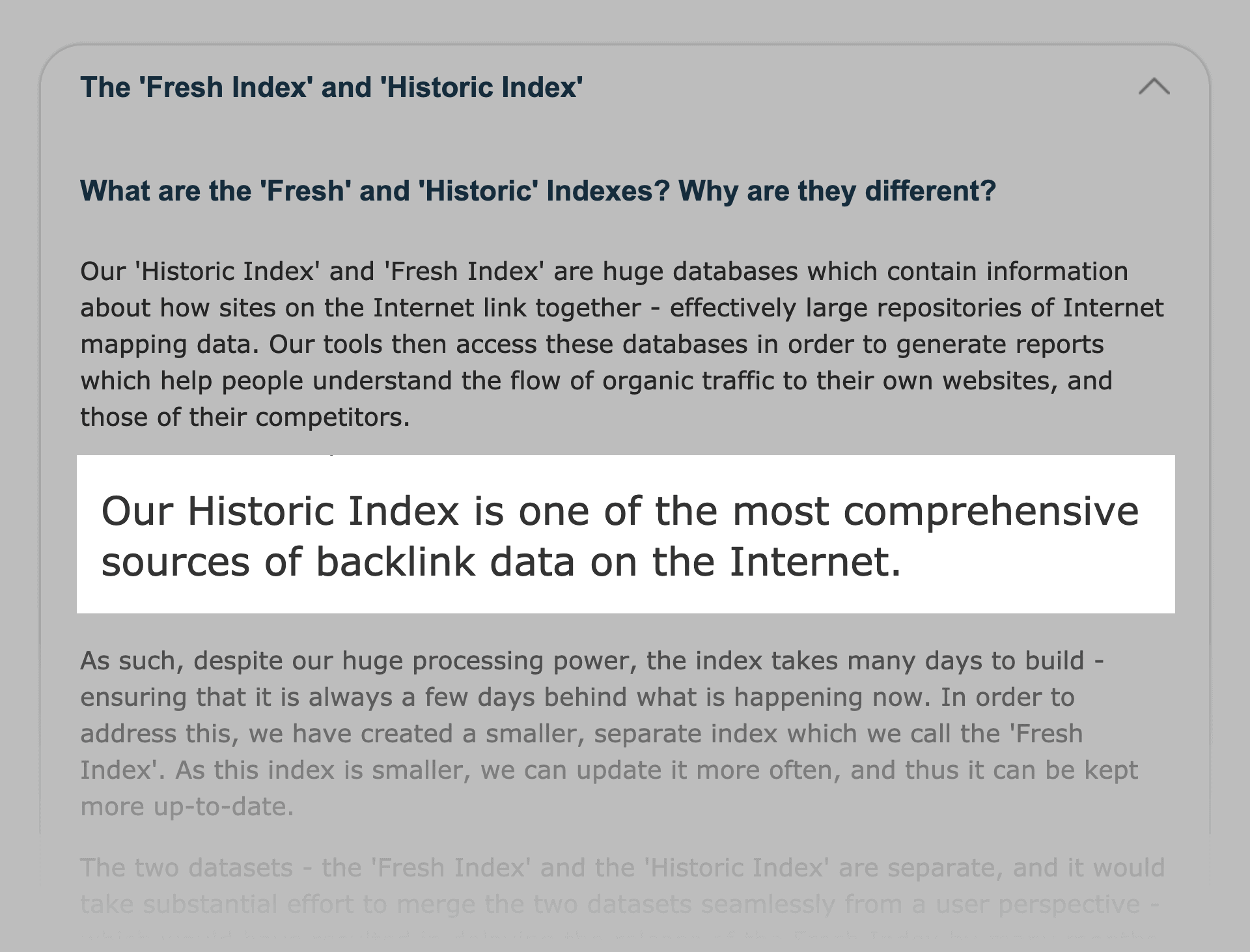
I’m going to put that claim to the test a little bit later.
But for now, I did want to point out that Majestic is first and foremost a link building tool.
With that out of the way, let’s take a look at Majestic.com’s key features.
Site Explorer Summary
The Site Explorer summary is where you get a high-level overview of a website’s link profile.
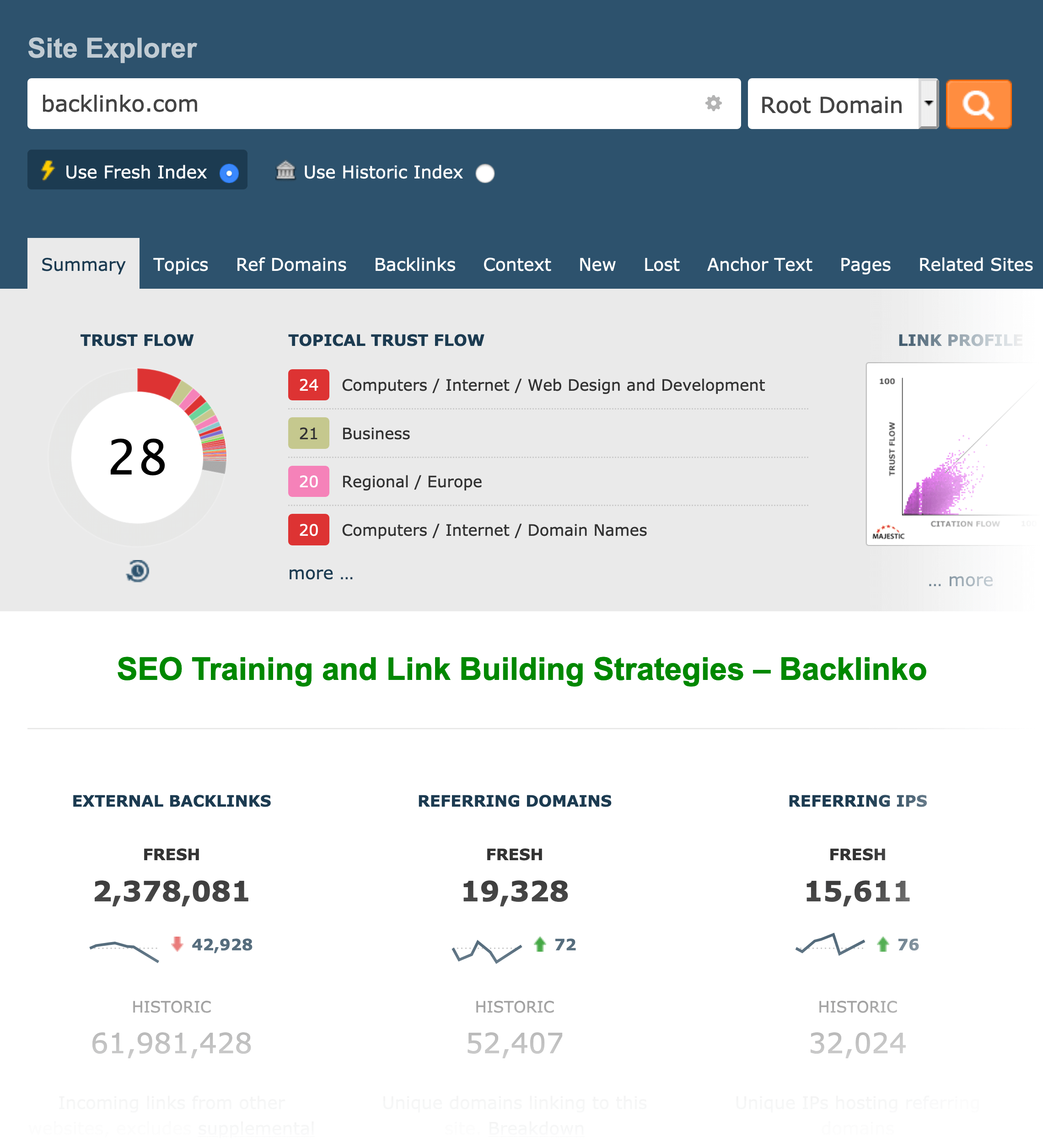
On this page you can see a laundry list of metrics on the website you just analyzed, including:
- Trust Flow
- Citation Flow
- Topical Trust Flow
- External Backlinks
- Referring Domains
- Referring IP Addresses
- Crawled URLs
- Indexed URLs
- And more
In other words: this page is designed for you to scan a site’s link profile and see key link metrics (like Trust Flow).
And if you choose “subdomain”, “Path” or “URL”, from the dropdown menu, you can get detailed link data on a specific page.

Topics Report
The “Topics” report is Majestic’s way of figuring out what a website is all about.

What’s interesting about this feature is that they don’t determine your site’s topic based on the content that you publish. Instead, it’s based on where you get your backlinks from.
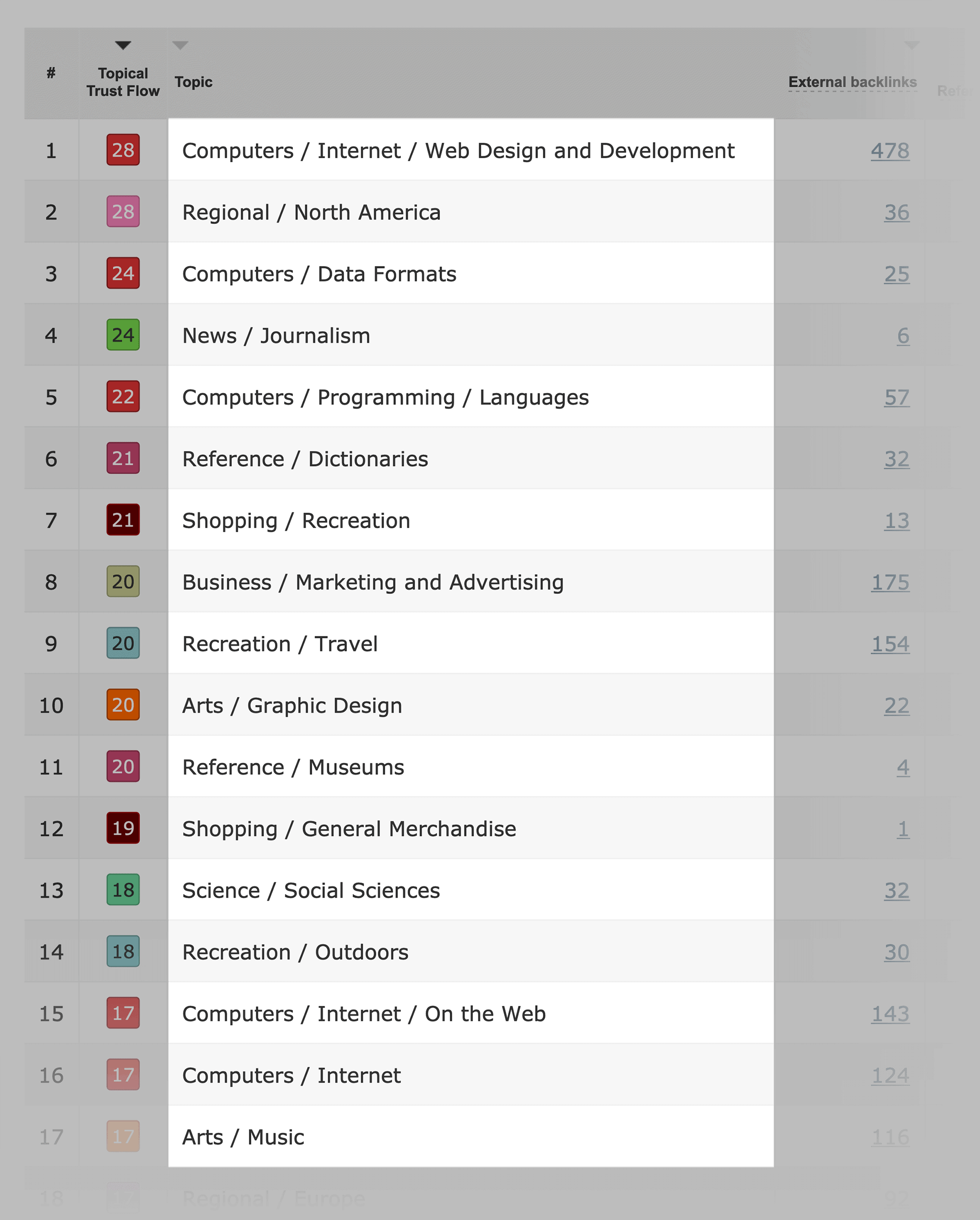
For example, Backlinko is a marketing blog. And most of my backlinks come from sites in the “Computers / Internet / Web Design and Development” and “Business / Marketing and Advertising” niches.
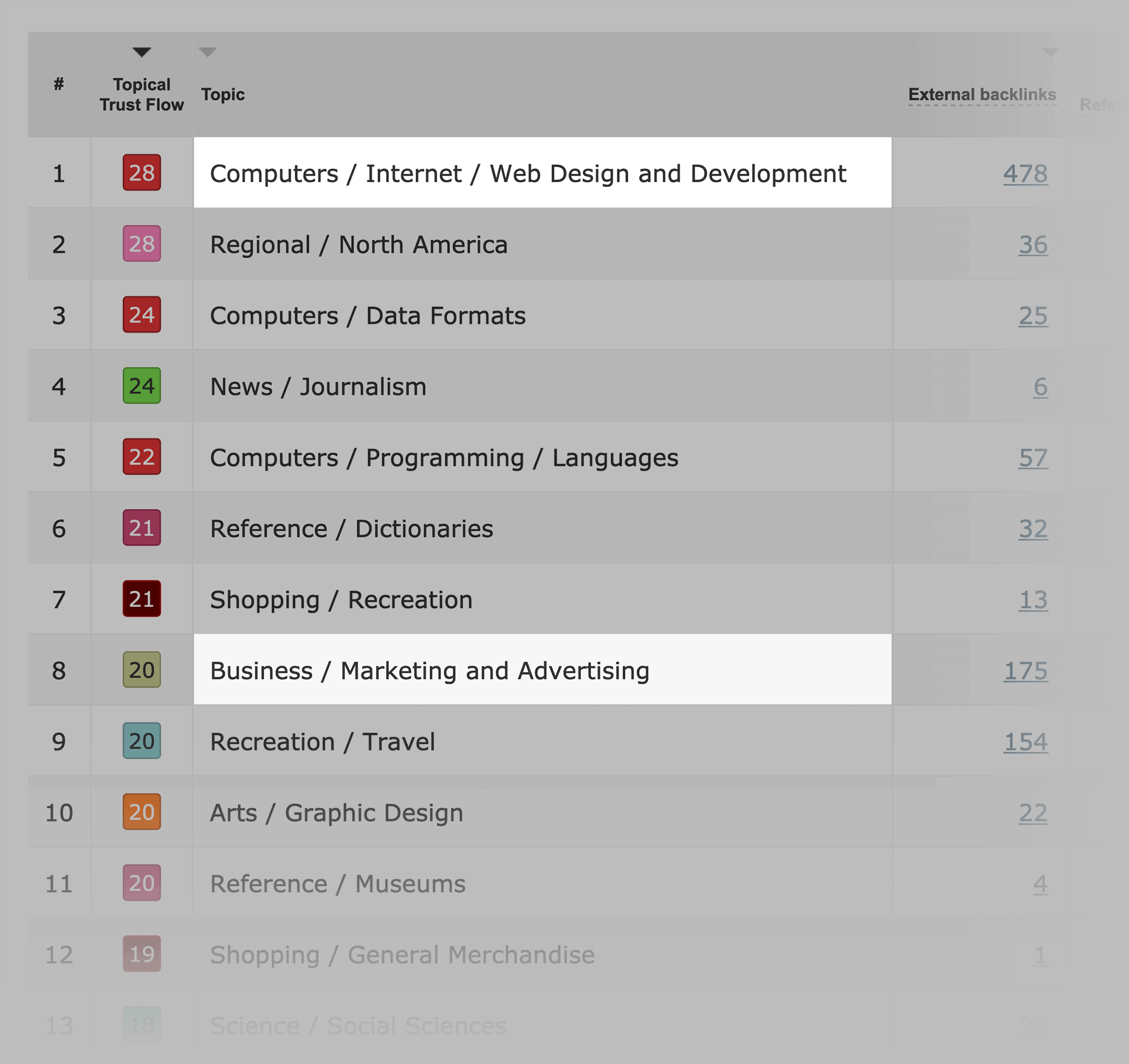
This is an interesting feature that I haven’t seen in any other link building tool.
And I actually think there’s something to it. Google probably uses the websites that link to you to figure out what your site is about. And to figure out your authority on that topic.
For example, let’s say that your site is about health and fitness. And you get most of your links from other health and fitness websites.
Well, to search engines like Google, this confirms that your site is about that topic. And that you’re a respected authority in that niche.
So yeah, I’ve tried pretty much every SEO tool under the sun. And this is a unique feature that only Majestic SEO seems to have.
Referring Domains
Referring domains is similar to any other backlink analysis tool. It’s a list of domains that are linking to your website.

You can also sort the results by Trust Flow, Citation Flow, Top level domain and more.

And if you click on the linked number under “backlinks”, you can see the exact pages that are linking to you.

One thing that kind of tripped me up was the “backlinks” number itself. Does this mean the backlinks that site has overall? Or the number of times they’ve linked to you?
You won’t find many helpful explanations as you use the tool (I’ll show you a bunch of examples in this Majestic SEO review).
Either way, this data is questionable at best. For example, take a look at this website that’s linking to me.

According to Majestic, that domain either has 327,599 backlinks. Or has linked to me 327,599 times.
No matter how you look at it, that number makes no sense. That blog is very well respected. But I know for a fact that it doesn’t have 300k+ backlinks (which is A LOT). And there’s no way they’ve linked to my site 327 thousand times.
So yeah, referring domains is a standard feature in any link building tool. But I was a little bit confused by some of the referring domain numbers that I came across in Majestic.
Majestic’s Backlinks Report
Again, this isn’t much different than what you’d find in Moz Pro or Ahrefs. It’s basically a breakdown of a website’s backlink profile.

Just like with the referring domains report, you can sort and filter the results 100+ different ways.
For example, you can sort the list to ONLY look at backlinks with high or low Trust Flow. Or look at deleted backlinks to get an idea of a site’s backlink history.
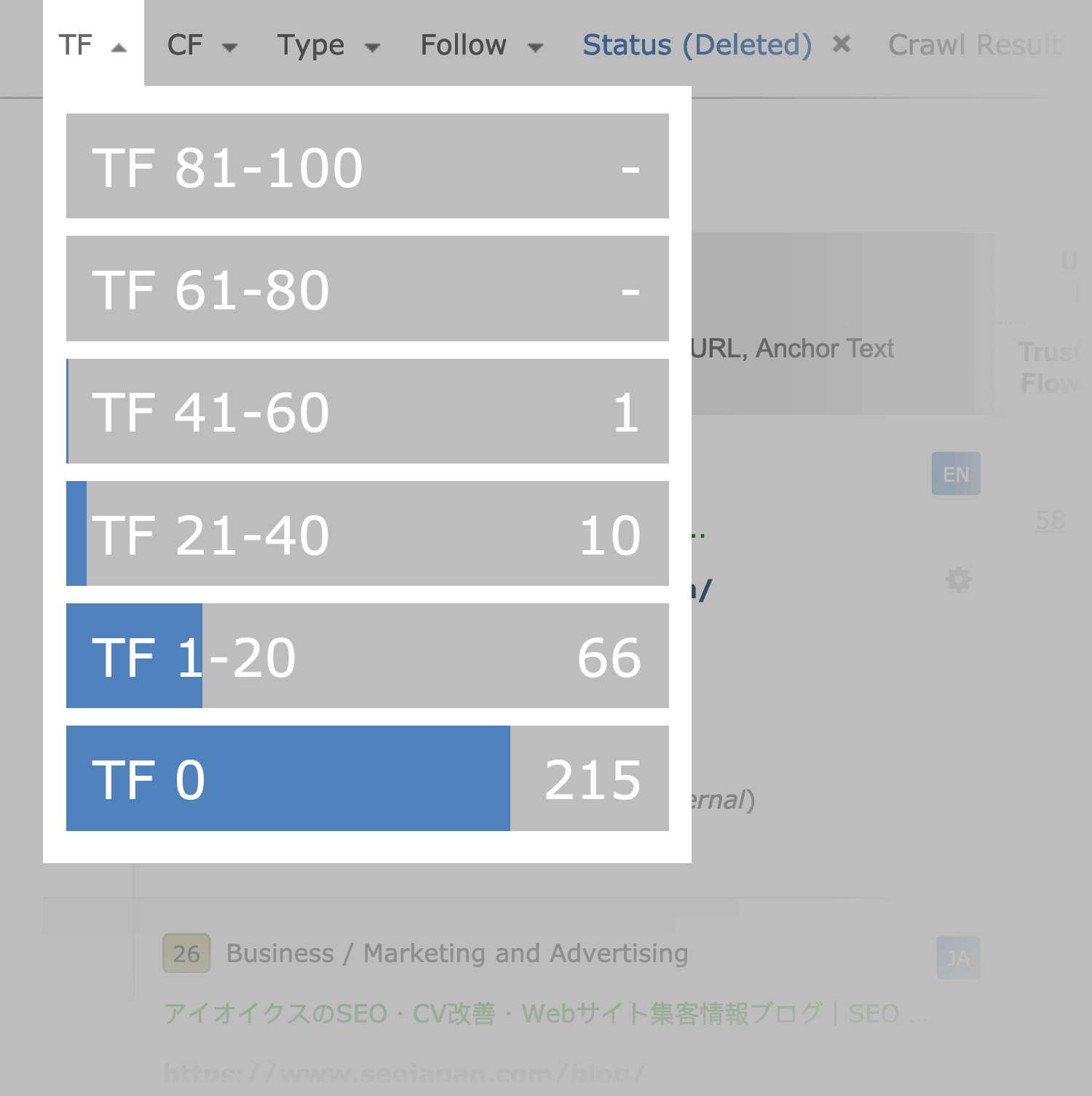
And like most SEO tools, you can download all of this data as a CSV or Excel spreadsheet.
Besides the Trust Flow and Majestic’s other proprietary “Flow Metrics” , I should point out that they also report on the number of external links on each page that’s linking to you.

Which IS unique.
This is important because many people believe that a backlink on a page with 5 external links is better than one with 150. That’s because the page with 150 external links will “leak” more PageRank.
I’m not 100% sold on this idea. But again, this is a unique little feature that I’ve only seen in Majestic. So I did want to point that out.
Context Report
This one took me a little while to figure out. It’s not super clear how to use this feature at first glance.

But my take is that this is essentially a VERY deep breakdown of each individual link in a site’s link profile.
Underneath the link itself, you can see a series of tags.
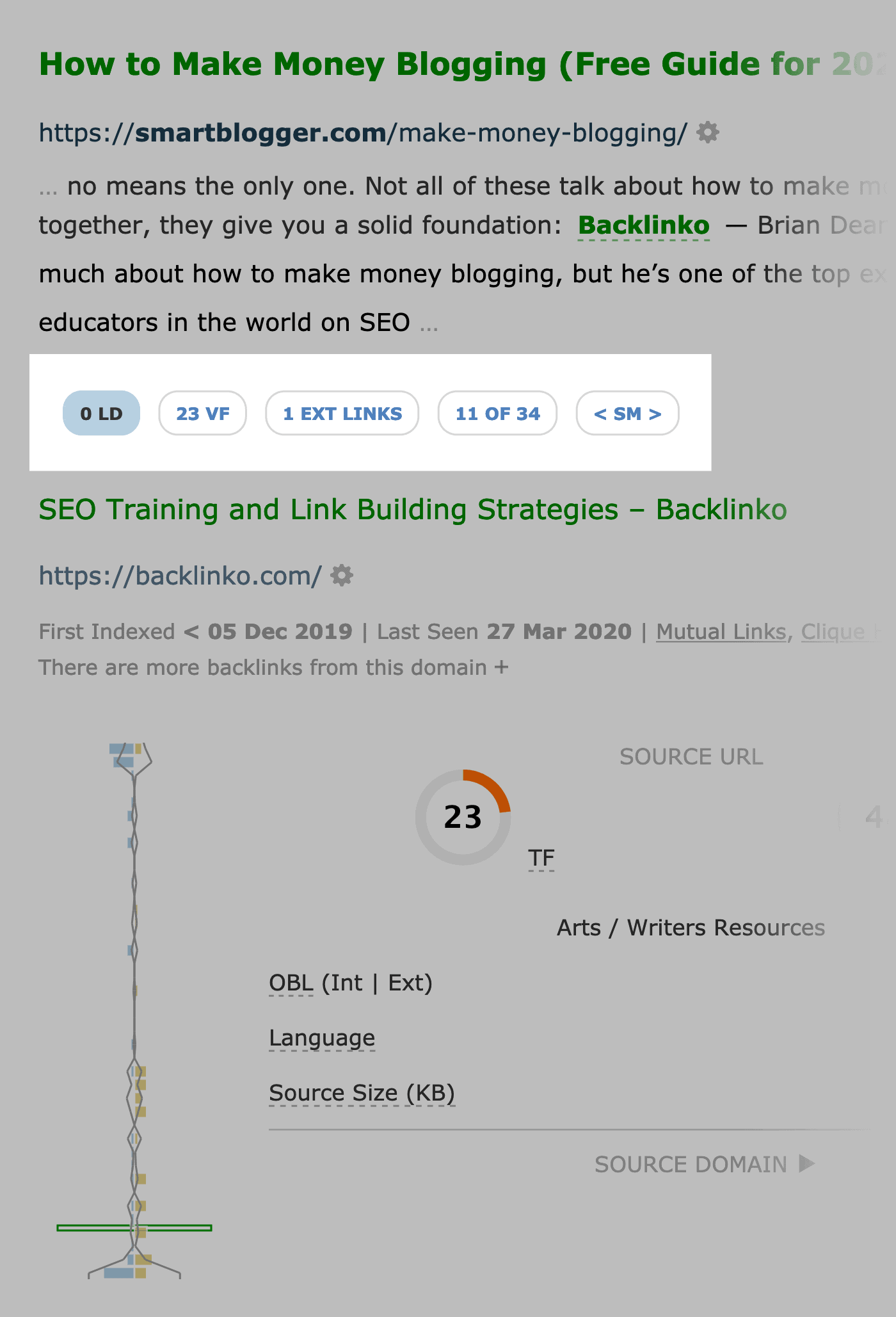
These tags tell you whether or not the link is new/old, dofollow/follow, how many other external links are on the page, and more.
That wasn’t what really threw me off. That’s all pretty straightforward stuff.
What I didn’t understand at first was their “Link Density charts”.

So after reading about them, I was able to kind of understand them.
Basically: they’re a way to visualize WHERE a link is on a webpage.
For example, you can see that this page has a lot of links at the top and bottom of the page.

There aren’t many links at all in the middle of the page.
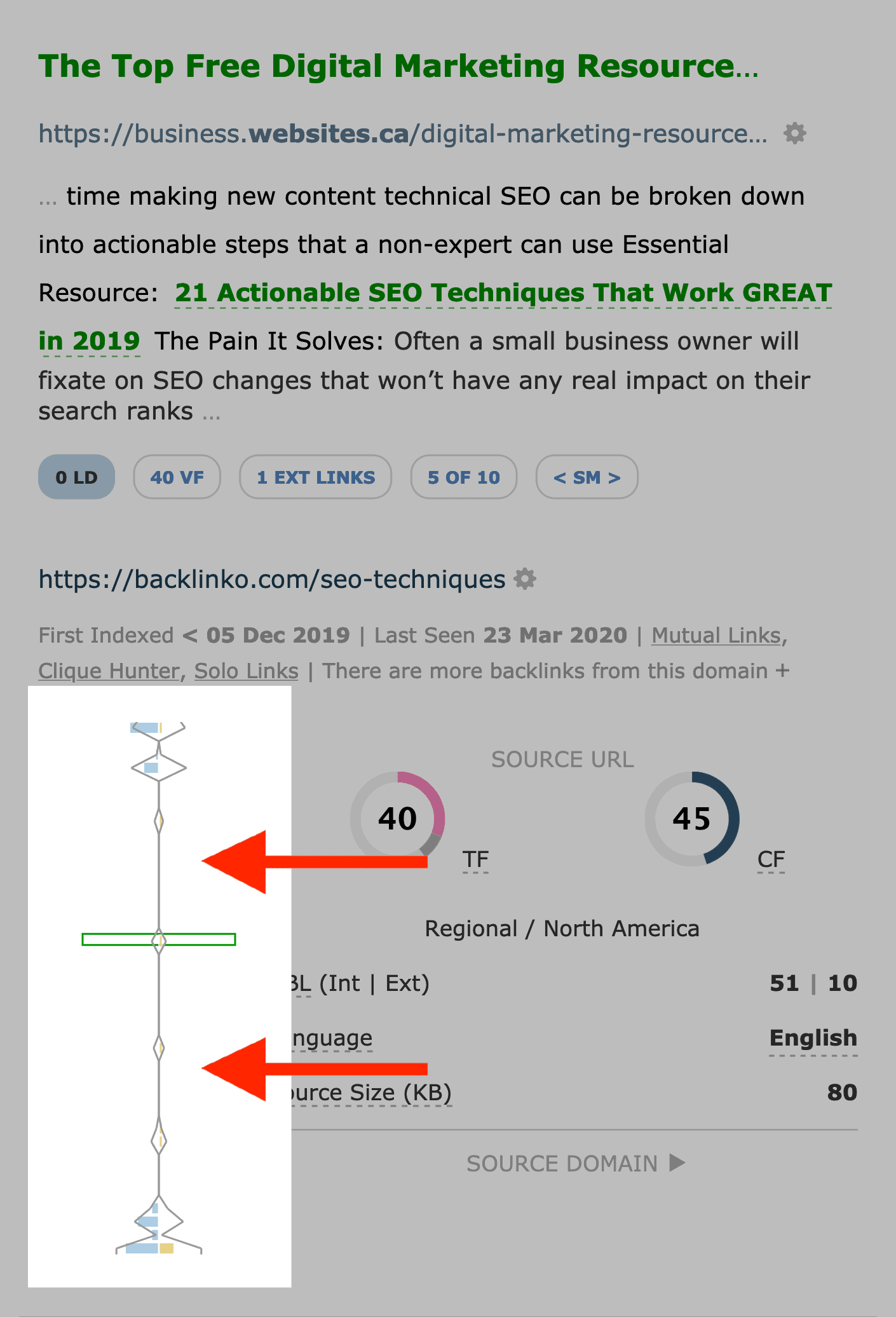
The link to my site is inside of that thin area (it’s highlighted with a green box):

This tells you that my link isn’t packed in with a bunch of other internal or external links. That’s something you’d see on a resource page or on a directory.
Instead, the link is an editorial link inside of content.
And if you look at the actual page, that’s what’s happening.
There are a bunch of links in the sites navigation.
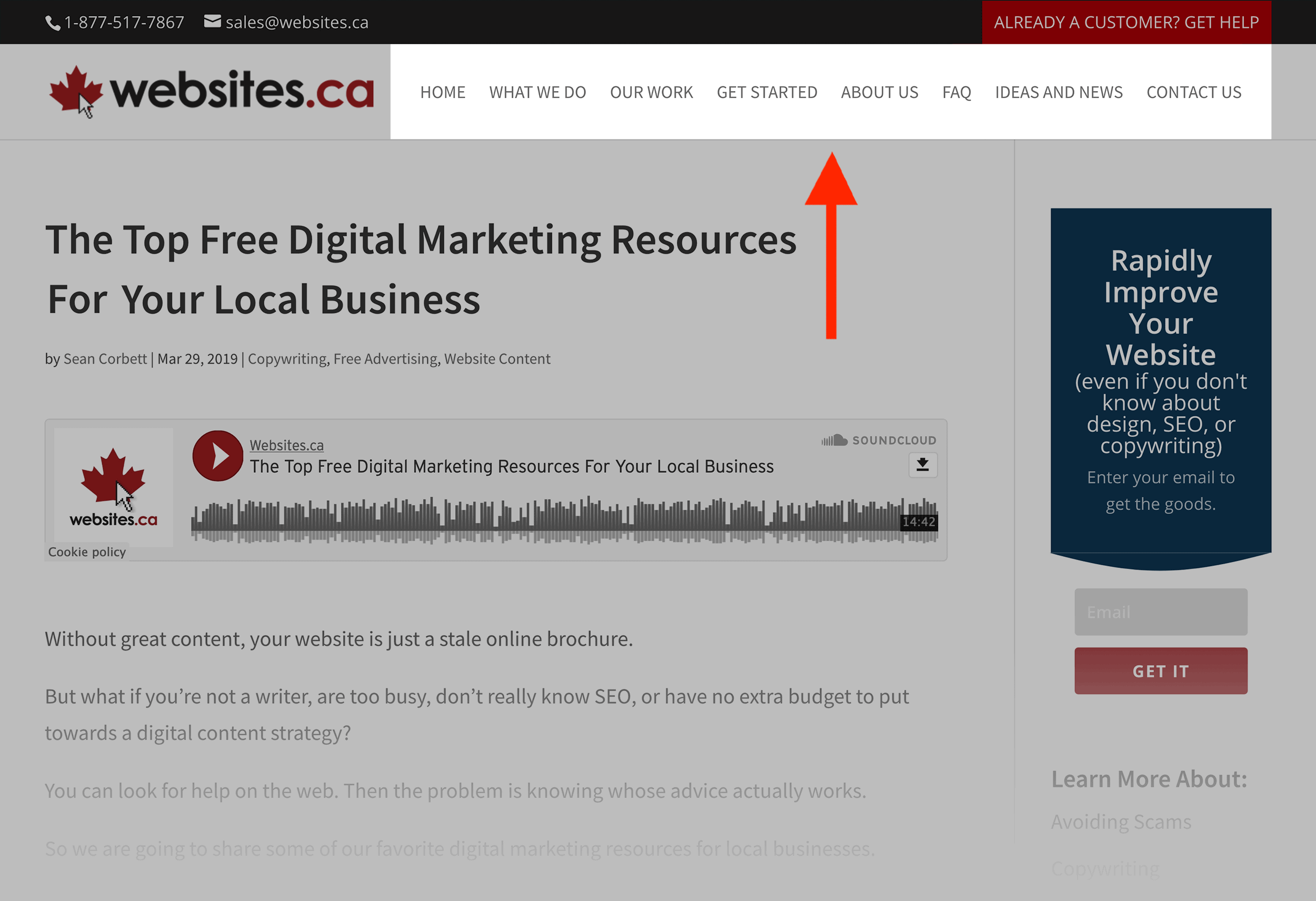
Very few in the middle (here’s mine).
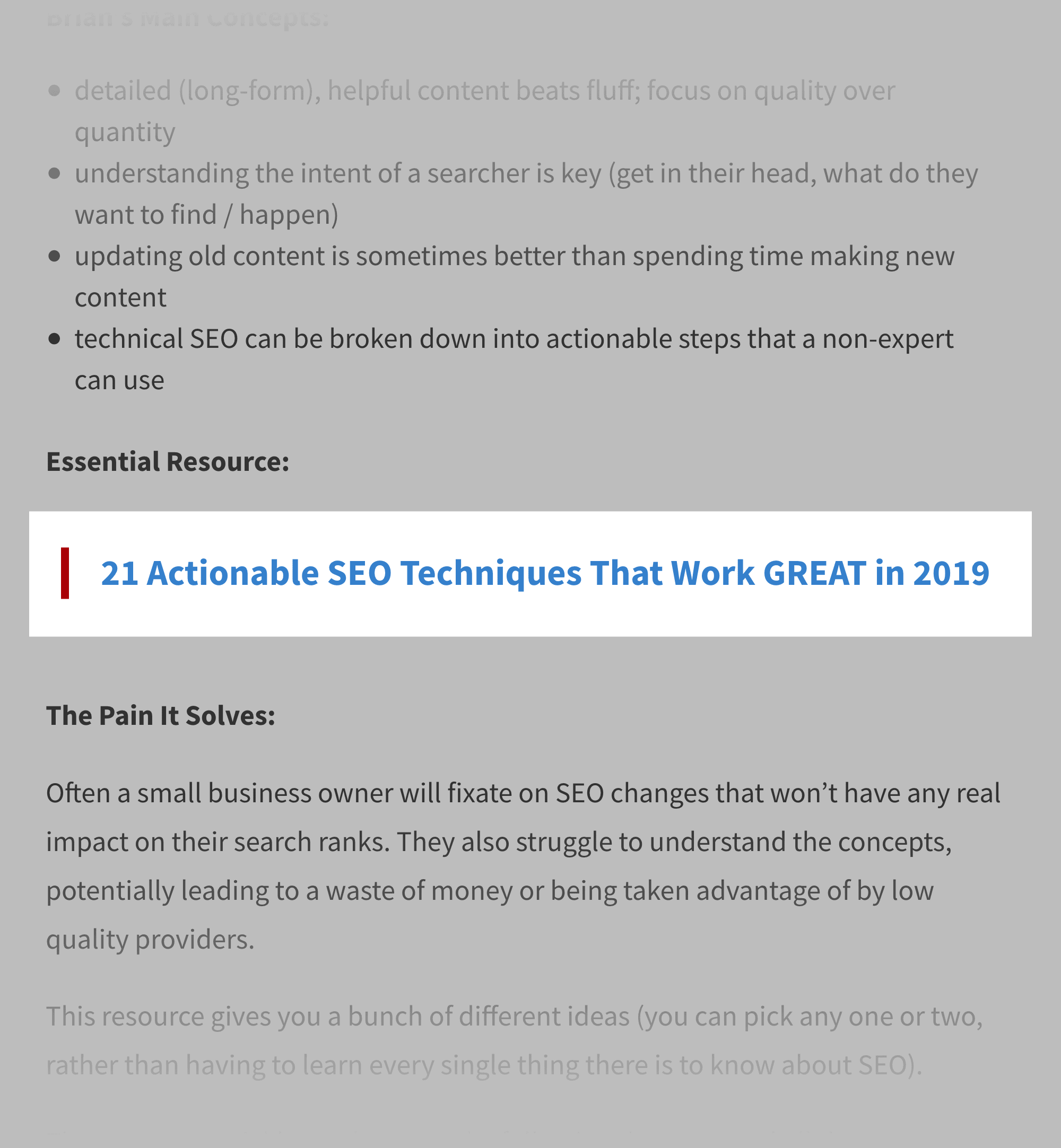
And then a bunch more internal links in the footer.
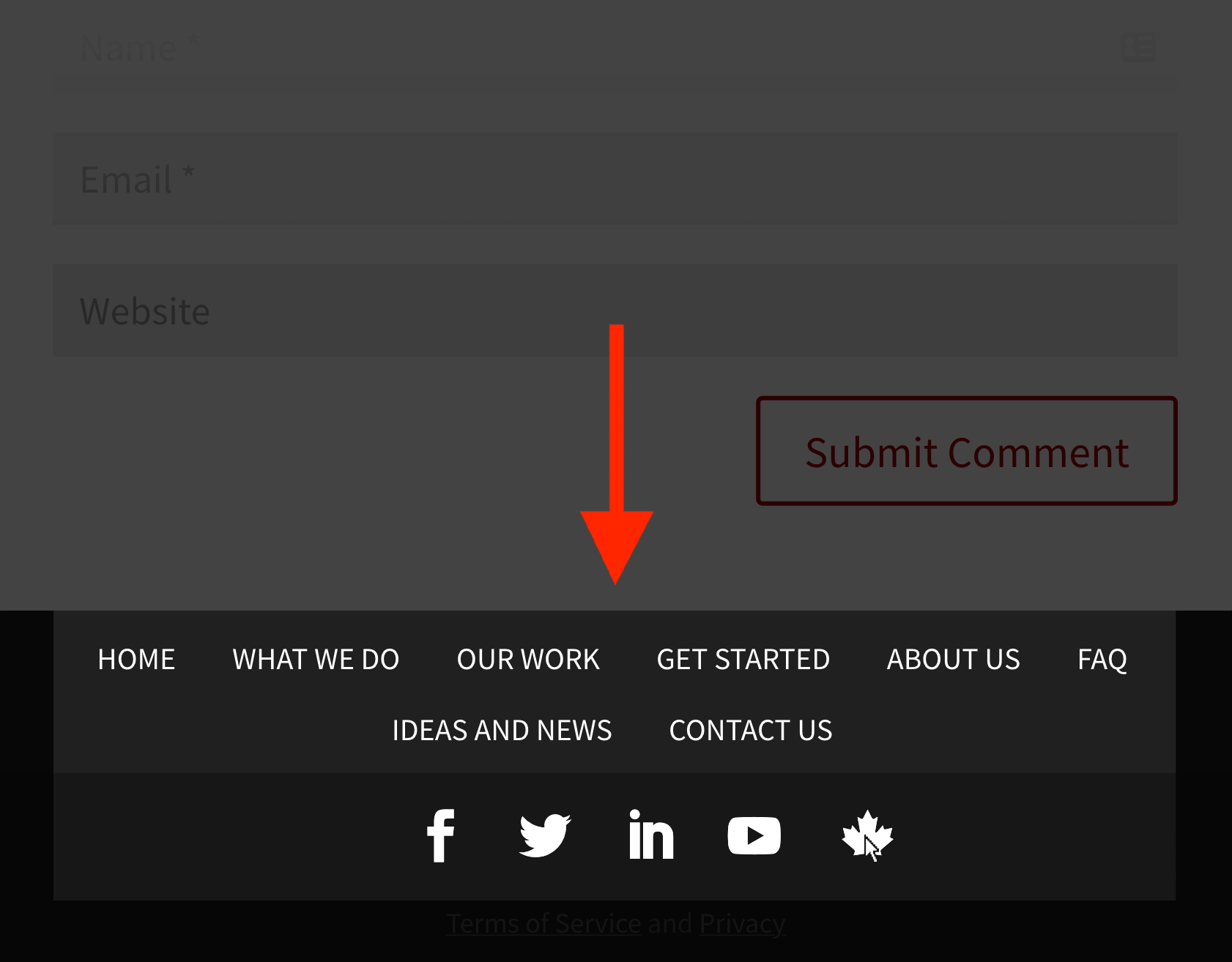
Is this feature cool? Definitely. I’m not exactly sure what the use case is for it. But again, this is yet another Majestic SEO feature that I haven’t seen in any other tool.
New and Lost Links
There’s not much to say here. This is a list of recent links that a site built.

And links that were lost.

Anchor Text Breakdown
Here’s where you can see the most common anchor text that people use when they link to a domain or specific page.
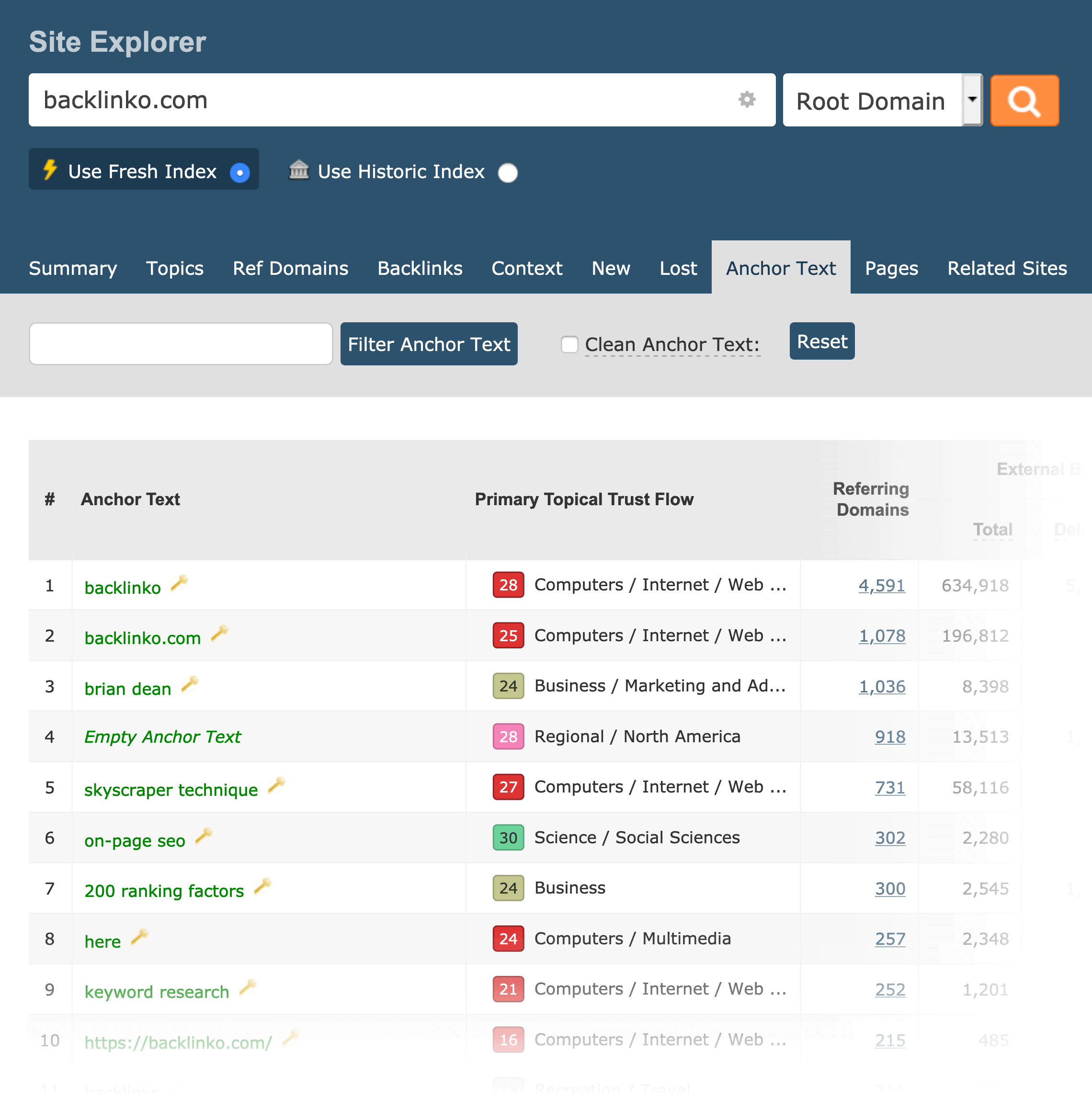
Again, you’ll find this kind of thing in any link building tool.
But I do like the giant word cloud. It makes it easy to see which terms tend to show up most in a site’s anchor text profile.
My only nitpicky feedback here is that it would be nice to get a % breakdown of each term.
Yes, they give you a detailed anchor text list.

But you can’t quickly scan the list to say: “OK, 50% of the links use this term in the anchor text”.
This is something that you DO get in the Site Explorer summary report.
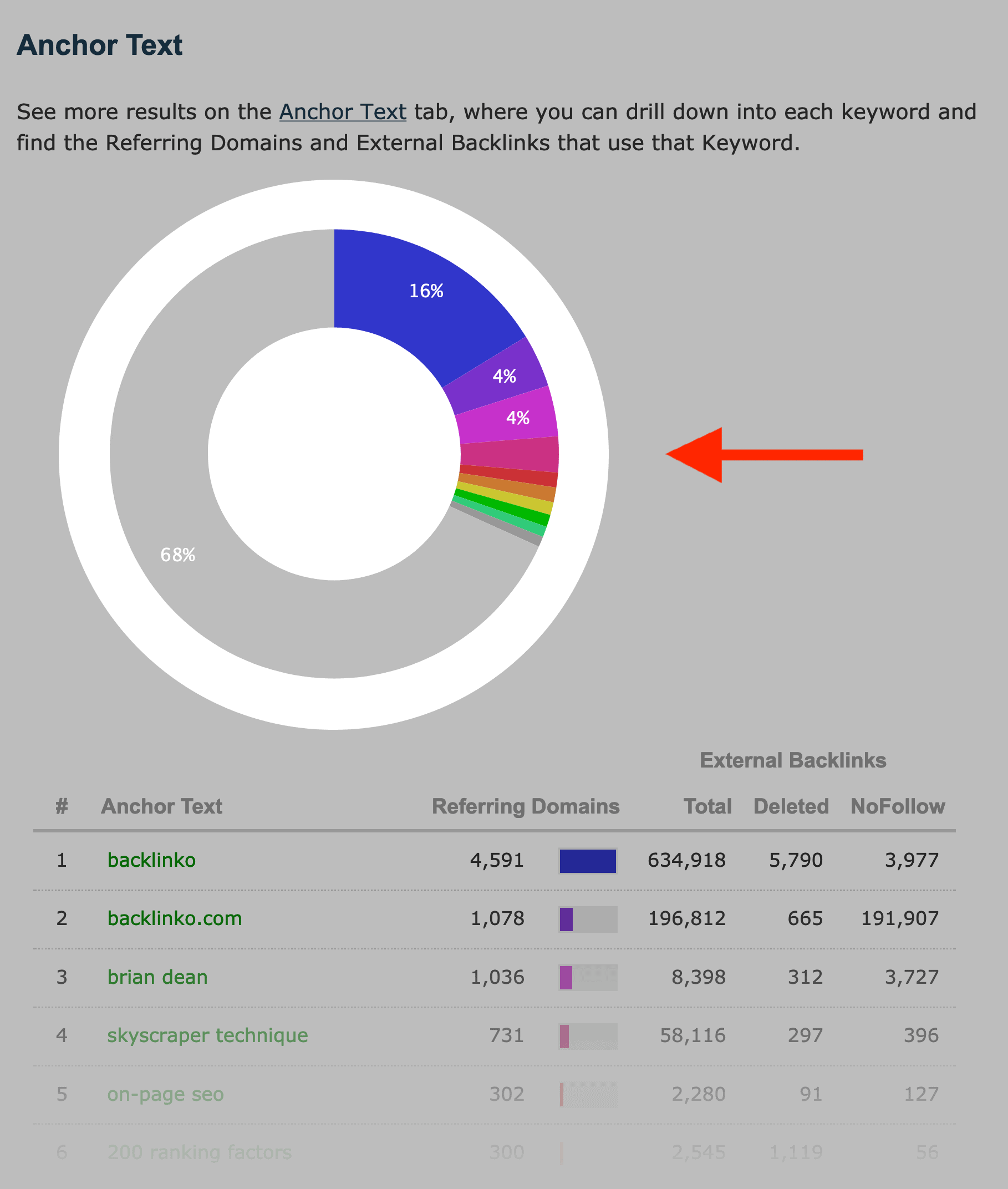
But oddly enough, you get LESS anchor text data on the actual “anchor text” tag.
Go figure.
Seeing an exact percentage of a site’s anchor text breakdown on the “anchor text” report isn’t a huge deal. But it’s yet another sign that Majestic’s UX is completely broken (more on that later).
Pages Report
These are the pages on a website with the most backlinks.
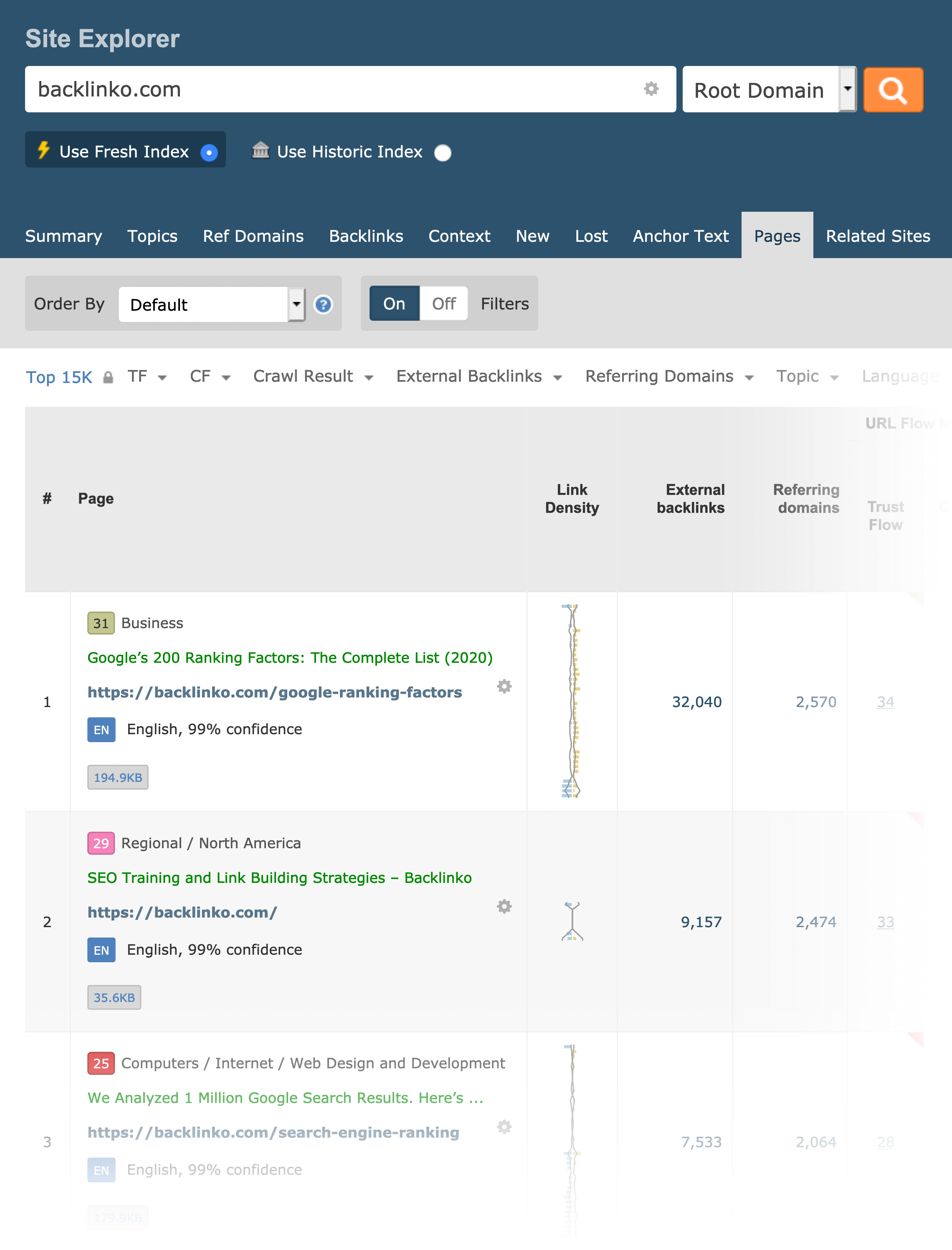
If you use Ahrefs, this is called “Best by links”. In SEMrush, they call it “Indexed Pages”.
But they all work the same way: it’s a quick way to see which pages have the most backlinks, referring domains or overall link authority.
Related Sites
As the name suggests, this is Majestic’s list of websites that are closely related to the one that you’re analyzing.
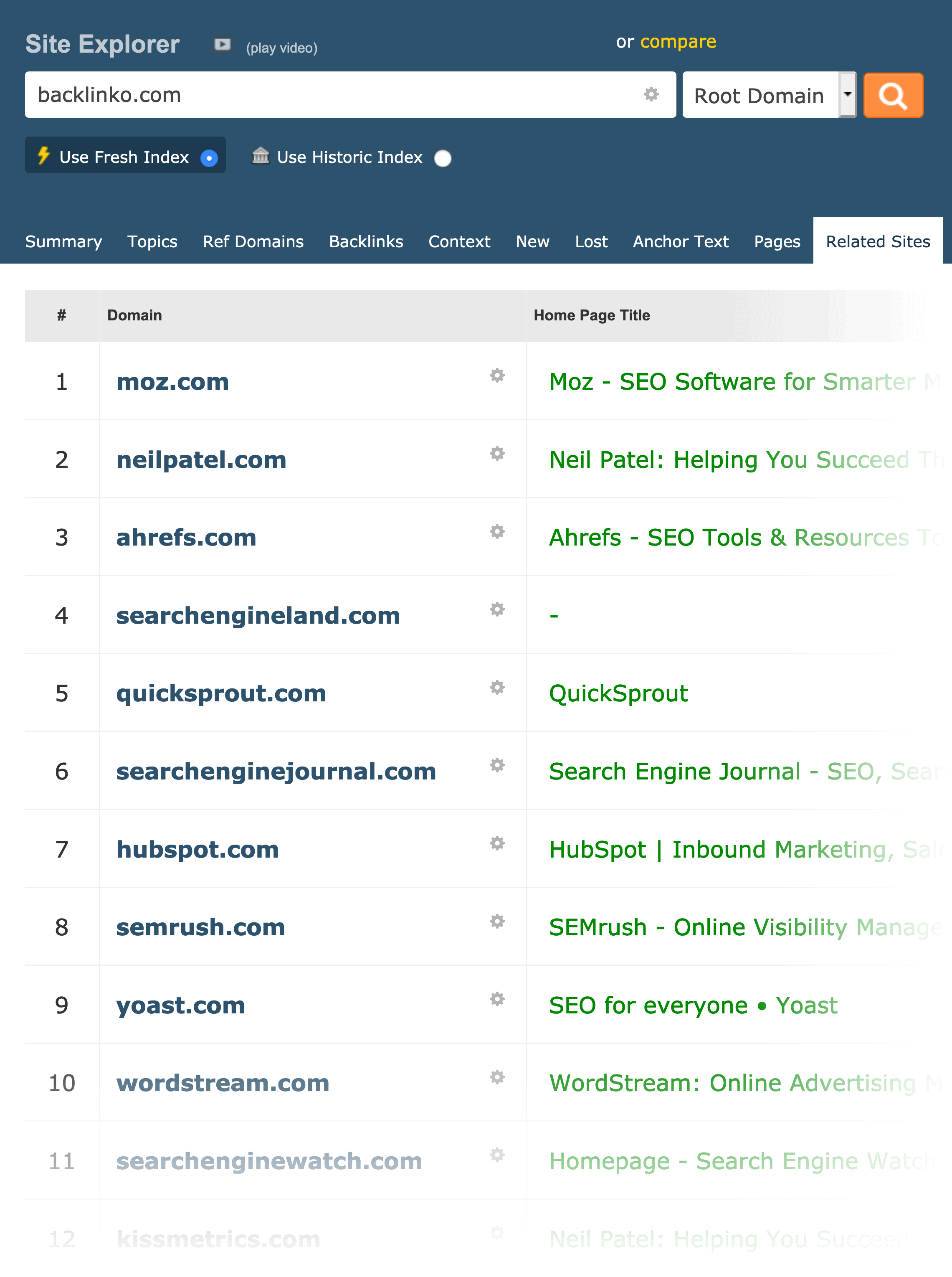
And I have to say: this is scary accurate.
When I analyzed Backlinko, it literally listed out the same sites that come to mind whenever I think of other sites in my niche.

If you’re familiar at all with the SEO space you’ll recognize those sites. And you’ll probably agree that they’re VERY closely related.
I’ve seen a few other tools (like SimilarWeb) try to bubble up “related sites”.
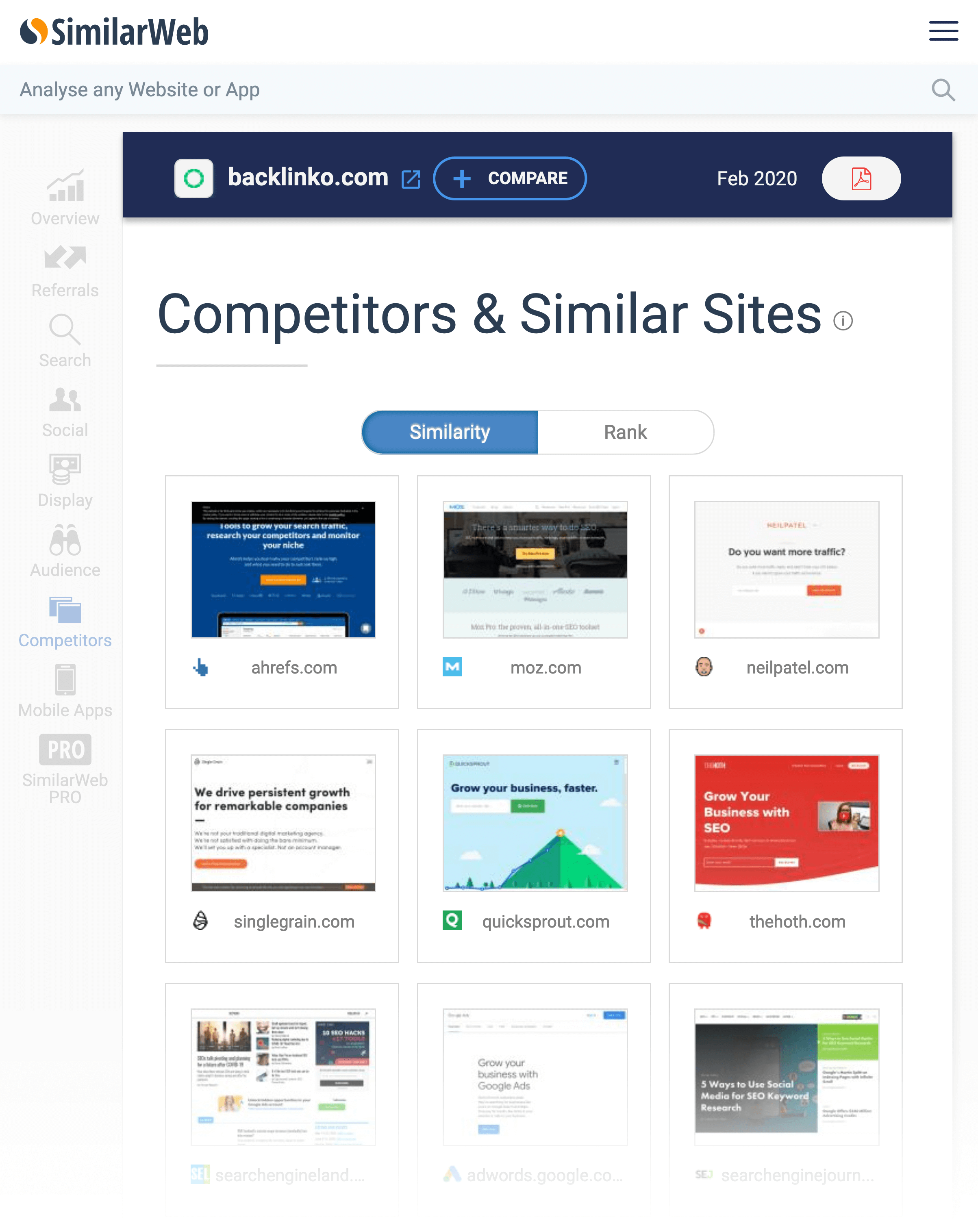
And they all do a decent job. But I was legit impressed with the list of related sites that Majestic came up with here.
I tried out a few other websites in different niches to make sure that this wasn’t a fluke. The results weren’t as strong as when I looked at Backinko. But they were still pretty solid.
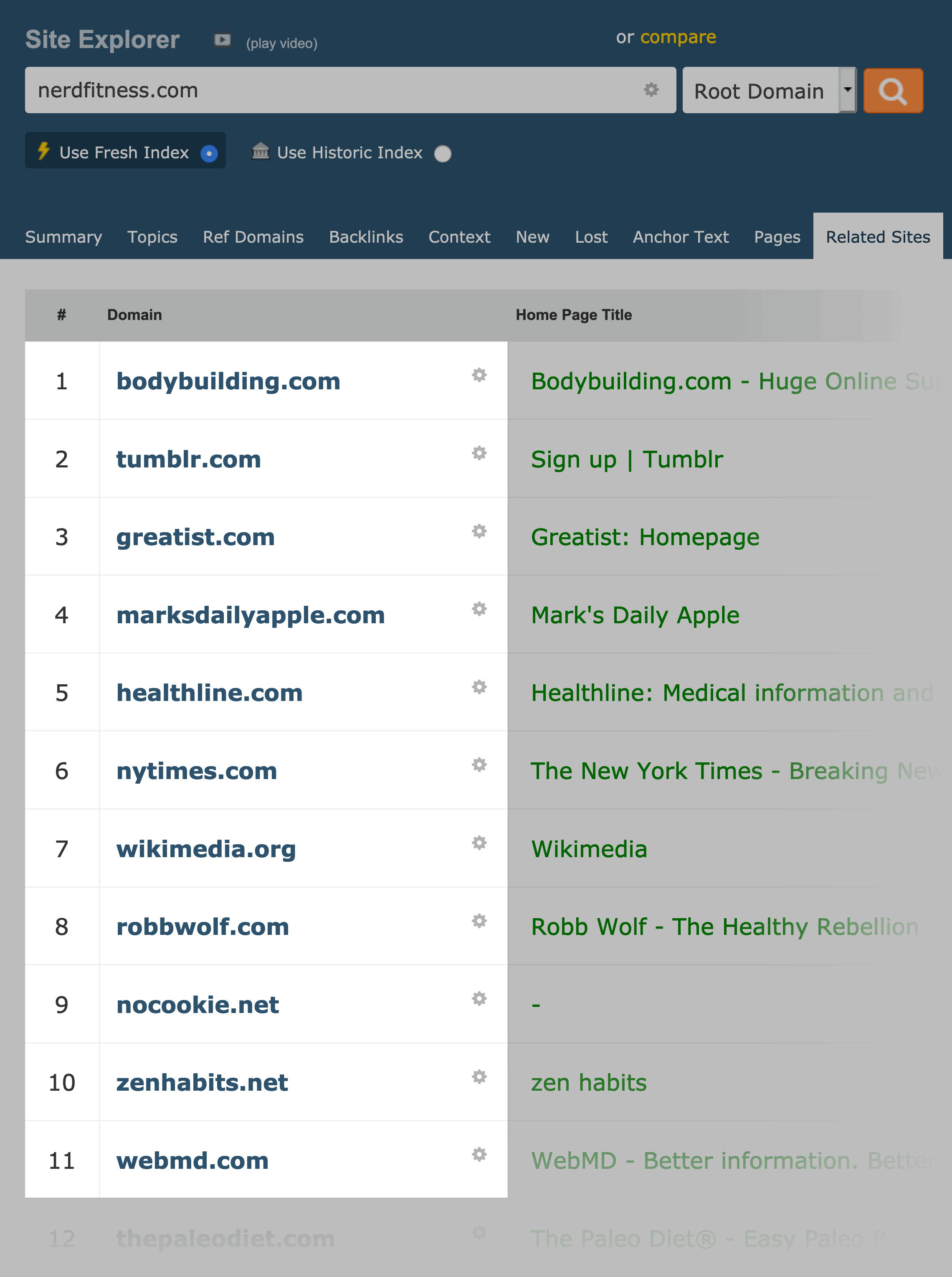
Compare Domains
Here’s where you can view the link metrics of 2-5 different sites side-by-side.
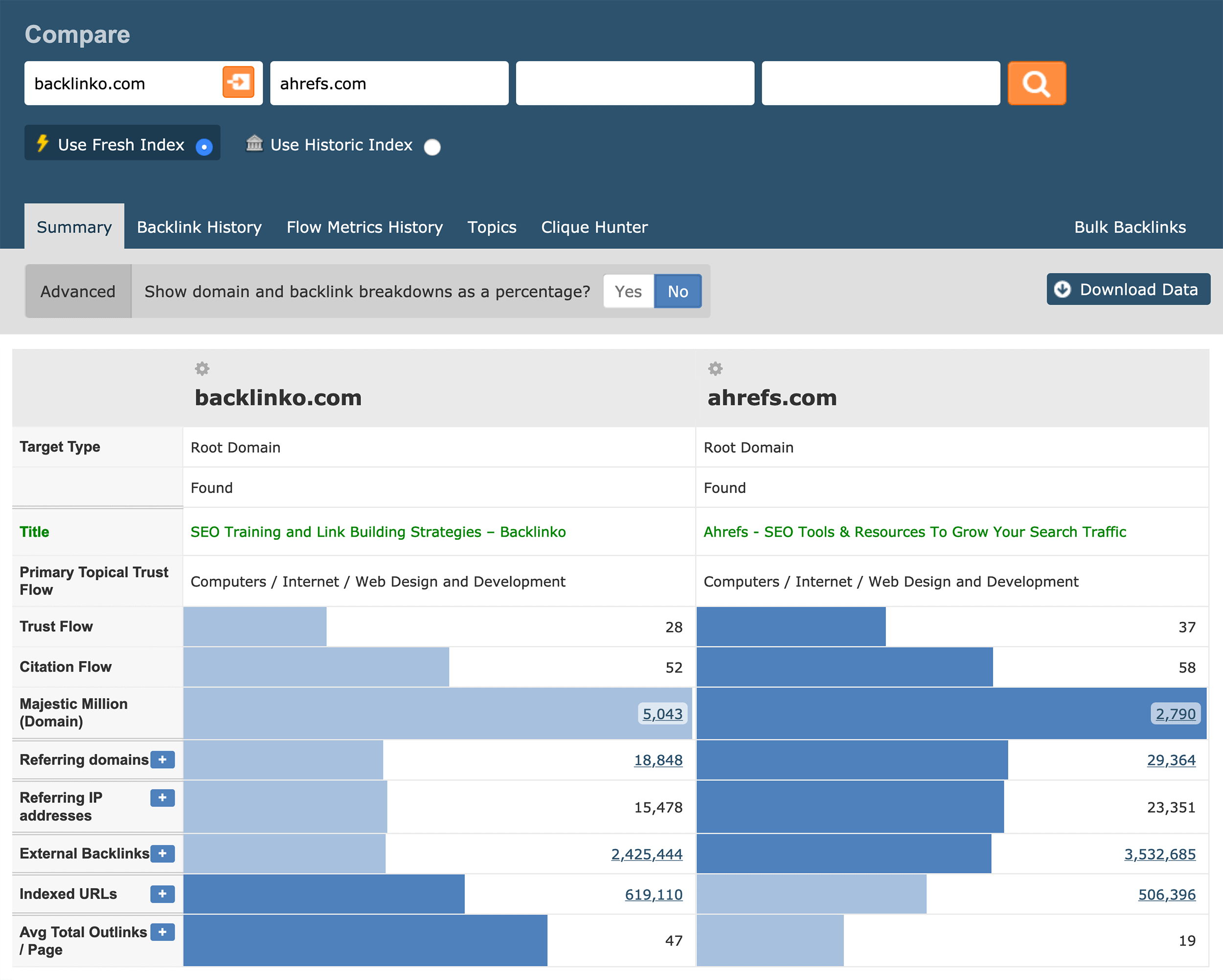
This isn’t a groundbreaking feature or anything. And it’s a feature that most other link analysis tools have. But it is a helpful feature that’s done well.
Tucked inside of “Compare Domains” is something called “Clique Hunter”.

Clique Hunter shows you domains that link to all of the sites that you just compared. Not just one.
Why is this helpful?
It’s simple: if a site links to ONE of your competitors, it’s a sign that they might link to you too. But if that same site links to four competing sites, they’re MUCH more likely to send a link your way.
For example, here’s what I see when I compare my main SEO competitors.
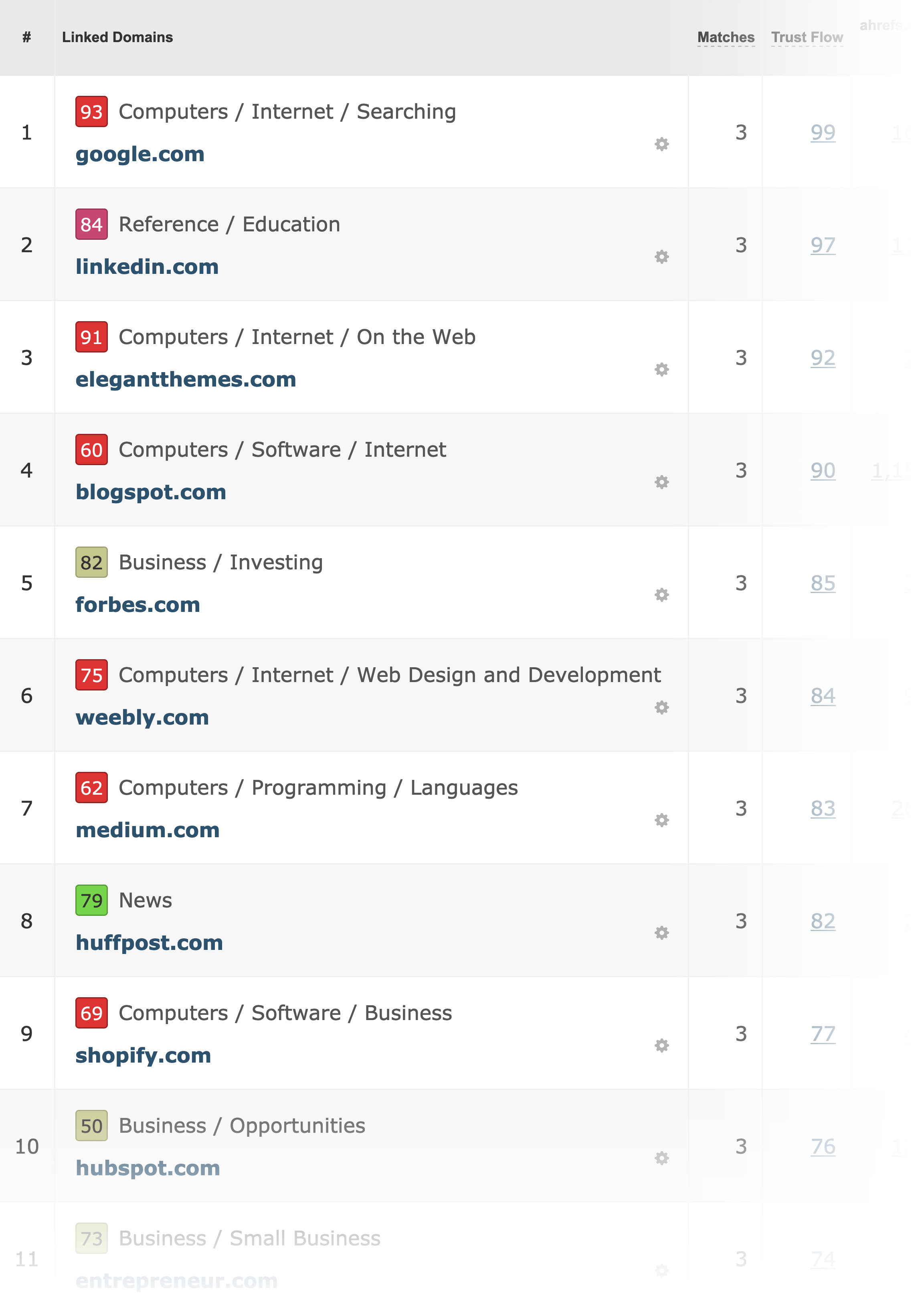
If I was running a link building campaign, one of my first steps would be to figure out how I could also get backlinks from the sites on this list.
Keyword Checker
I’ve been working in the SEO field full-time for over 7 years. And I honestly don’t 100% understand what this feature is or how to get the most out of it.
From what I understand, Majestic is trying to estimate search volume based on how often terms appear on pages.

But I could be wrong.
For example, when I searched for “keto diet”, Majestic tells me that this keyword gets 67 searches per month.
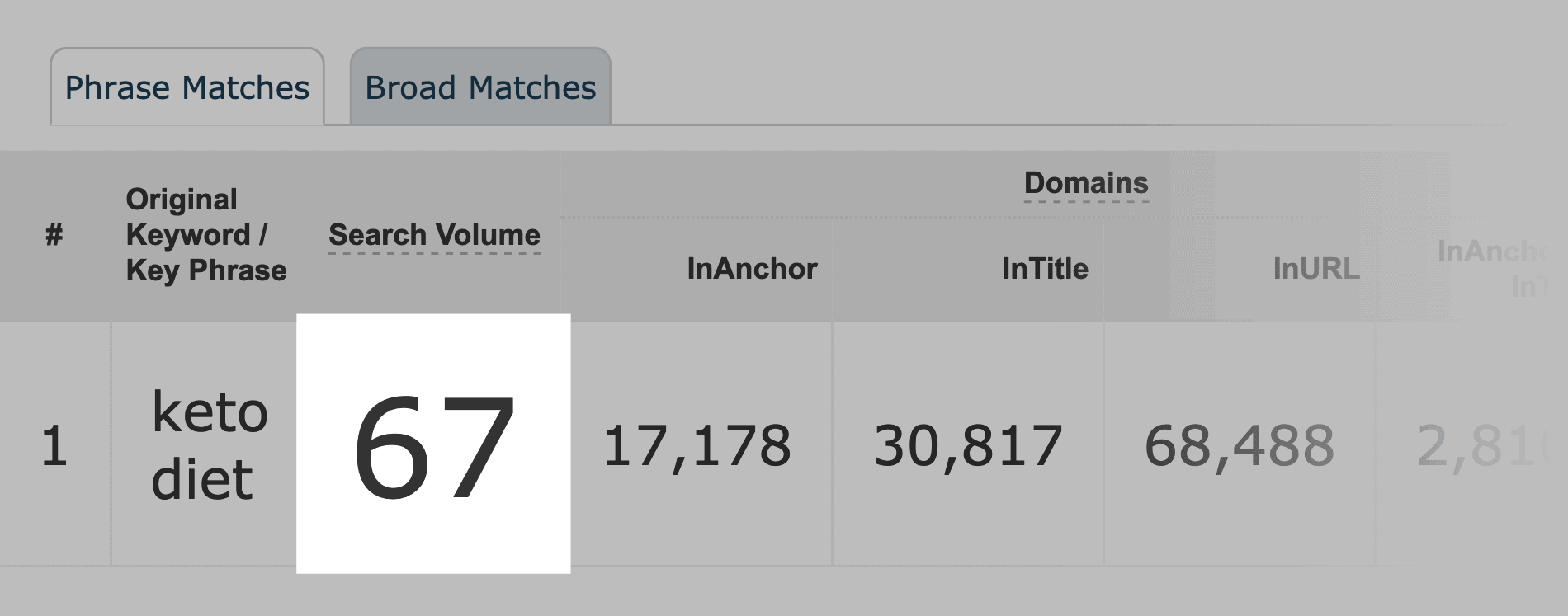
What? According to every other keyword tool out there (and common sense), this keyword gets searched thousands of times every month.
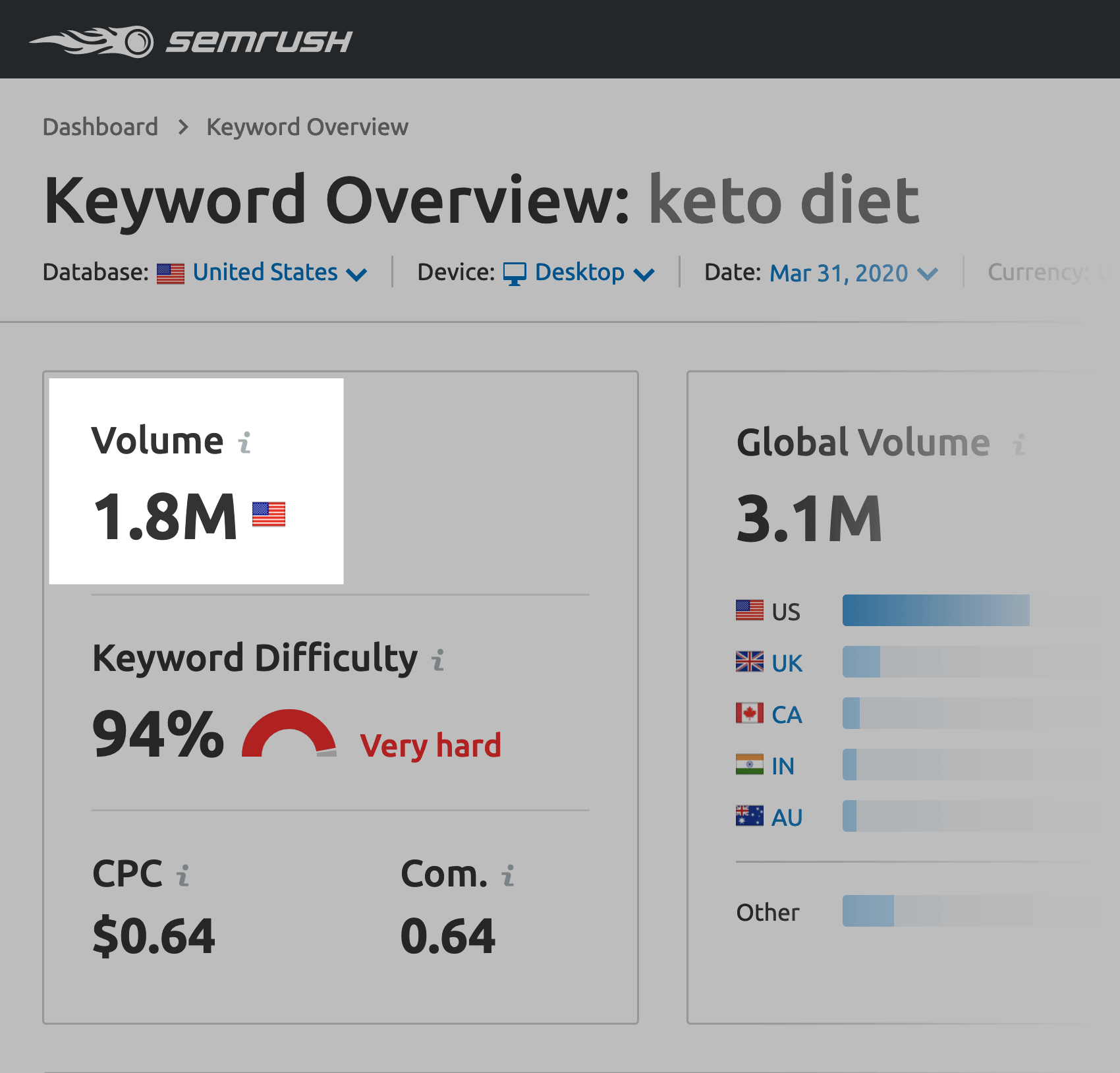
In my opinion, Keyword Checker is a great example of one of Majestic SEO’s biggest flaws:
It’s an interesting feature that’s poorly-explained. And may not even work.
Moving on…
Majestic SEO Flow Metrics: Trust Flow, Citation Flow and More
No Majestic SEO review would be complete without a breakdown of their proprietary link metrics.
So let me quickly outline them here:
Trust Flow: The Trust Flow Metric is Majestic’s version of TrustRank. It’s basically how many links a site gets from a set of hand-picked “seed sites”. And from links that have links from those seed sites. I do think Google uses something similar (but MUCH more advanced) in their algorithm. So there might be something to it.
Citation Flow: This is basically Domain Authority. So if you get a lot of backlinks from authority sites, this number will go up.
Topical Trust Flow: Here’s where Majestic breaks down the type of websites that you get links from. Needless to say, you want backlinks from authoritative domains. But you also want links from related sites. And this metric helps you figure out what types of sites are linking to you.
Is Majestics’s Link Index As Big as They Claim?
I wanted to quickly compare Majestic’s link data to three Majestic SEO alternatives: Ahrefs, SEMrush and Moz Pro.
For this quick comparison, I looked at how many referring domains and backlinks that each tool found for my website, Backlinko.com.
Here are the results:
| Tool | Total Backlinks | Total Referring Domains |
|---|---|---|
| Majestic SEO | 64,849,233 | 50,712 |
| Ahrefs | 1,200,000 | 21,300 |
| SEMrush | 1,600,000 | 22,600 |
| Moz Pro | 634,500 | 23,994 |
I ran the same analysis again. This time on a huge site in the health niche.
| Tool | Total Backlinks | Total Referring Domains |
|---|---|---|
| Majestic SEO | 57,228,004 | 351,090 |
| Ahrefs | 53,700,000 | 297,000 |
| SEMrush | 19,200,000 | 159,000 |
| Moz Pro | 9,500,000 | 169,900 |
Obviously, I can’t draw any firm conclusions from an analysis of two websites.
But based on this very small test, Majestic SEO looks to be competitive with the other major backlink checker tools. But it’s not necessarily any better at finding backlinks. And I seriously doubt their claim of having the biggest backlink index on the planet.
Majestic SEO Support
So far this Majestic SEO review has focused 100% on features.
That said: I also wanted to give Majestic’s support a shot. I usually ping support a few times when I first sign up for a tool. Just to figure out how to get the most out of it. Or to get some clarity on what a metric really means.
And I end up judging the tool partly based on their level of support.
So I thought it was worth testing out Majestic’s support for this review.
For this test, I sent this message over to their support.

And 53 minutes later, I received this:

What a helpful reply! The agent actually used my own website as the example. So I know that this wasn’t a generic response from some template. Overall, he did a great and thorough job of answering my question.
So based on this one ticket, I’d have to give Majestic an A+ for support.
Majestic SEO Pricing
Here’s how Majestic’s monthly pricing breakdown:

Unless you want API access, you’re looking at two different plans: Lite ($49.99/month) and Pro ($99.99/month).
Overall, these plans are MUCH cheaper than Majestic’s two main competitors: Ahrefs and SEMrush.
Ahrefs and SEMrush both start at 99$/month.
So at the end of the day, Majestic SEO’s Lite plan is 50% cheaper than Ahrefs and and SEMrush.
Majestic SEO: Things That I Like
Here are a few things that I really liked about Majestic SEO.
Unique Features: They may not be well-explained. And they may not be super useful to most people. But there’s no doubt that Majestic has a ton of features that you won’t find in any other SEO tool. For example, no other SEO tool on the market has anything that resembles Majestic’s Context Report.
Proprietary Link Metrics: Trust Flow. Citation Flow. Topical Trust Flow. These are metrics that are unique to Majestic.
Obviously, Citation Flow is basically “Domain Authority” in Moz Pro and “Domain Rating” in Ahrefs. So that metric isn’t super unique. But Trust Flow and Topical Trust Flow are both 100% unique to Majestic SEO. And they’re done well.
Fast and Helpful Support: My one contact with Majestic’s support team impressed the pants off of me.
Backlink Index: Majestic’s fresh index and historic index are both solid. Overall, Majestic’s link crawler may not be as good as they claim. But their index is definitely comparable to Moz Pro, Ahrefs and SEMrush.
Majestic SEO: What I Don’t Like
Here are the main things that I didn’t like about Majestic SEO.
Horrible UX: Majestic’s UX is old. Like Geocities old. And I’m not just talking about how the tool looks (although the site’s interface itself is super dated).
Majestic’s overall UX is unintuitive, confusing and just plain broken.
And this is coming from someone that’s been in the SEO field for years. So I can kinda of figure out what different features do based on other tools that I’ve tried. If you’re new to SEO, you’d probably have trouble even using Majestic. Nevermind getting the most out of it.
I’ve given a bunch of examples of the broken UX in this Majestic SEO review. So I don’t need to cover it again here. But to me, the bad UX is Majestic’s #1 flaw.
Flat Out Wrong Data: Different SEO tools are going to have slightly different numbers. That’s normal. But I found a few cases of Majestic’s data being just plain wrong.
For example, according to Majestic, Backlinko has 619,110 indexed URLs.
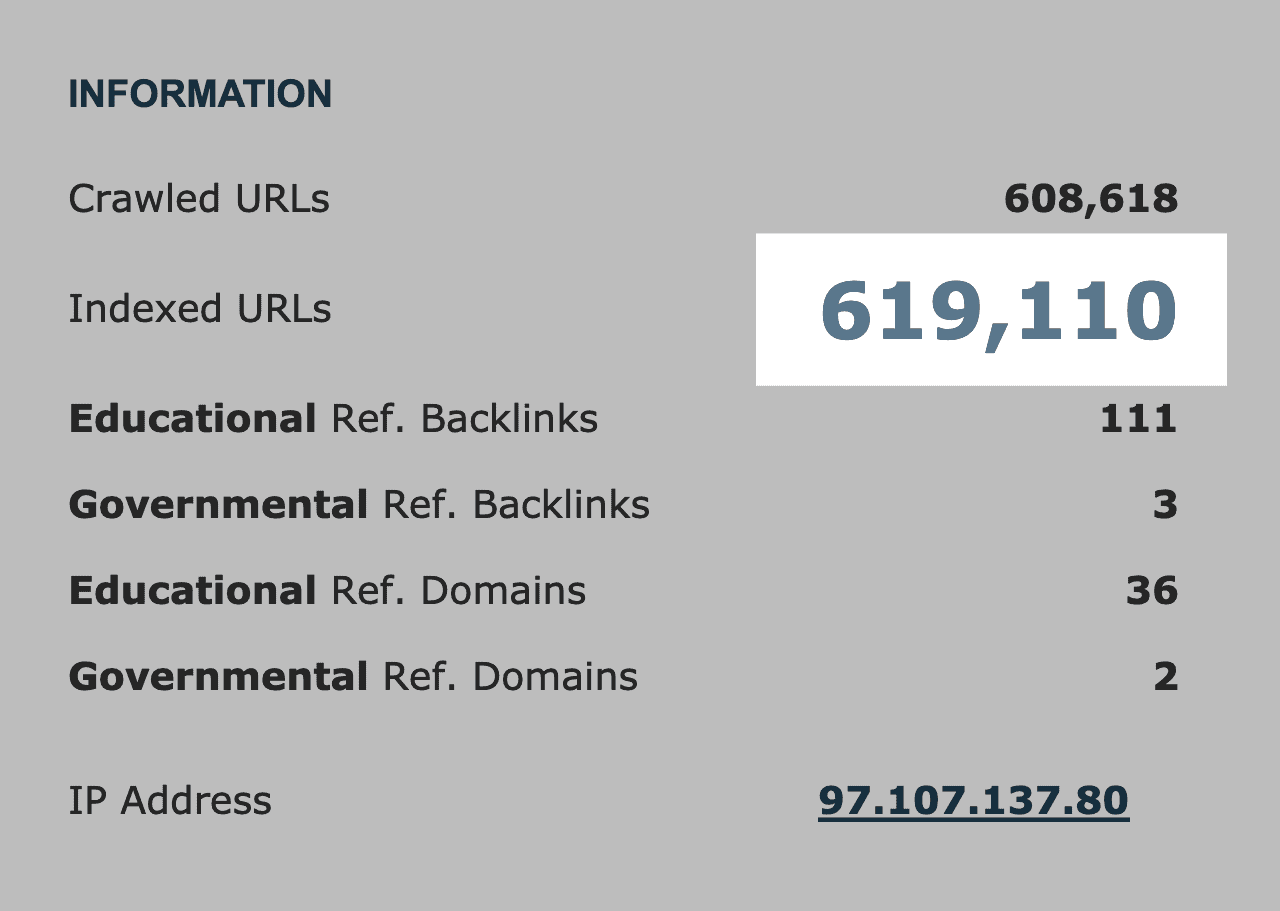
In reality, my site has 240 URLs indexed in Google.

Again, I’m not expecting this number to be 100% accurate. But when the number is that far off, it makes me question the tool’s data as a whole.
UX Writing: It’s one thing to have an interface that’s hard to use. But what makes it worse is that these features either have bad or no explanation.
When doing research for this Majestic SEO review I ran into literally dozens of metrics, features and reports that weren’t clear. And the explanations didn’t help.
Pointless Features: It seems like the Majestic SEO team just throws a bunch of stuff against a wall to see what sticks. Which makes the platform bloated with features that don’t have any practical purpose. The best example of a useless feature that I ran into is called “Business Profile”:

This is basically a directory of services. Why is there a directory stuffed inside of an SEO tool? I have no idea.
The Bottom Line: My Majestic SEO Review
Overall, I can’t recommend Majestic SEO.
Like the old saying goes: “you get what you pay for”. And I think that definitely applies here.
Even though Majestic is half the price of Ahrefs, it’s also half as good.
If you want a pro-level SEO software suite, Majestic is light years behind Ahrefs and Moz Pro. It lacks standard features (like a keyword research tool and SERP analysis) that most other major tools have.
Plus, the features Majestic does have are either broken, complicated, or not explained well (and sometimes all three).
So if you’re serious about SEO, you’re much better off with SEMrush or Ahrefs. And if you’re on a super tight budget you’d be better off using something like Ubersuggest.
Now I’d Like to Hear From You
So that’s it for my Majestic SEO review.
Overall, I think the tool does some things well. But the tool needs a major overhaul to be in the same conversation as Ahrefs.
And now I’d like to hear what you have to say.
Have you tried Majestic SEO before?
If so, I’d love to hear your experience with it.
So let me know your thoughts by leaving a comment below right now.
